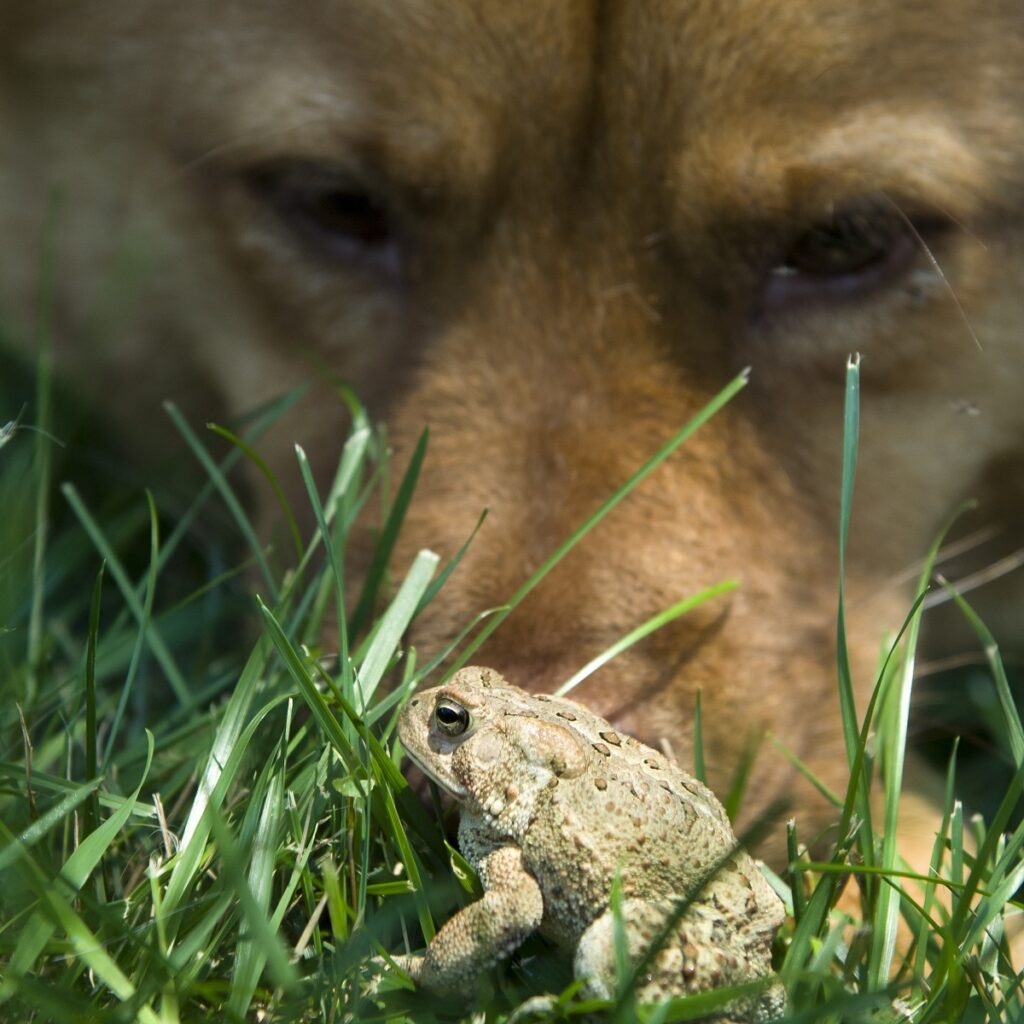
It seems like there are always can toads in our yard! Here in Queensland cane toads a seen almost year round, except for maybe two months in the height of winter. They are definitely worse after rain or during the summer months but basically if you walk outside after dark be prepared to dodge the toads. Not only are they in our way (and make me cringe) but cane toads are a potential danger to our pets causing a possible fatal poisoning.
Why are cane toads poisonous?
These rather unattractive amphibians are a common cause of poisoning to dogs and less commonly cats. When toads feel threatened they ooze a milky poison through the glands in the skin. If a dog or cat is to lick, bite or eat a cane toad the poison can make them sick. The poison typically has a hallucinogenic effect on the dog and can potentially kill them.
Symptoms of cane toad poisoning
The symptoms of cane toad poisoning will vary dependent on the amount of poison ingested. It also depend on the size of the animal, with smaller animals needing less poison to be affected. Signs of cane toad poisoning include;
Mild Poisoning
– Excessive salivation, drooling and/or frothing from the mouth
– Bright red & slimy gums
– Rubbing at the mouth
– Vomiting
Severe Poisoning
– Muscle spasms
– Seizures
– Increased or rapid heart rate
– Death
What to do if cane toad poisoning occurs
So what should you do if you notice these symptoms or suspect that your pet has cane toad poisoning? Firstly you should always contact your veterinarian to discuss the symptoms and seek advice. If the animal is just showing mild symptoms or you see them with a cane toad there are a few first aid measures you can undertake to prevent the poisoning from becoming severe.
First aid steps
– Thoroughly rinse the dogs mouth out to remove the poison. To do this hold your dogs mouth tilted down and first wipe the mouth and tongue out with some paper towel. Use a hose or tap on a slow trickle and thoroughly wash out the mouth for at least 10 minutes. Let the water run over the teeth, gums and tongue but keep the animal’s mouth tilted downwards to avoid water running into the lungs.
– Then use a wet cloth and gently wipe out the mouth, teeth, gums and roof of the mouth. Rinse the cloth between each wipe and continue the process for 5-10 minutes.
If your pet settles and does not seem to be showing any further signs of poisoning confine them, away from toads and watch closely for any developing symptoms. These first aid measures are often enough to prevent the poisoning from becoming severe if administered quickly. If your pet continues to deteriorate or is showing signs of severe poisoning you need to get them to a vet urgently as the situation can quickly become life threatening.
Severe cases of cane toad poisoning will require veterinarian monitoring. Treatment with intravenous fluids, anti-seizure medication and oxygen therapy may be required. Blood tests may be run to determine if there has been any organ damage. A dog with cane toad poisoning will be monitored close until symptoms ease.
How to prevent cane toad poisoning
If talking to your pets and explaining the dangers of playing with cane toads just isn’t sinking in there are a few things you can try. Training your dog to stay away from toads is a good start. This can be done by taking them out at night on a lead and teaching them to avoid and ignore the toads by using reward based training methods. This training will take time to sink in and needs to e repeated regularly (daily at the start) for it to become effective. Training may not work for every dog and you can not stay with them all night, so who knows what they are getting up to. Therefore the best way to prevent cane toad poisoning is to keep your dog locked inside at night. Bringing them in just before dark, when toads become active, is the best preventative measure.
Why does my dog love cane toads?
Some dogs just love toads. Maybe they are very inquisitive and find the hopping fun to watch. Other dogs just like to eat, or try to eat, everything. But there is also another possibility. Years ago I read an article that said some dogs were addicted to the “high” or the effect that the cane toad poison has on them. The poison released by a cane toad has a hallucinogenic effect on a dog and some dogs like the feeling. These dogs may become addicted to the high which causes them to repeatedly seeking out cane toads for a lick. If you have a dog that loves cane toads the best step is lock them up so they can not get to them.
To find out more about Cane Toads and how they can effect your dog tune into the myPET Podcast – Cane Toads; Poisonous, Deadly and Addictive. Dr Glenn and I discuss why cane toads are so dangerous to our pets, particularly dogs. We also discuss the first aid steps to take and when to know that a serious poisoning has occurred and veterinary attention is required urgently.
If you ever have any concerns or questions about your pets health and/or cane toad poisoning please speak to your veterinarian.
Until next time,
Bec

